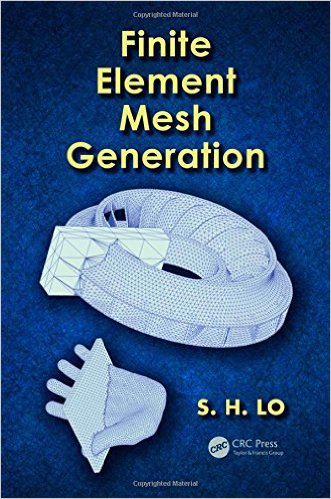 [内容简介]
[内容简介]
Highlights the Progression of Meshing Technologies and Their Applications
Finite Element Mesh Generation provides a concise and comprehensive guide to the application of finite element mesh generation over 2D domains, curved surfaces, and 3D space. Organised according to the geometry and dimension of the problem domains, it develops from the basic meshing algorithms to the most advanced schemes to deal with problems with specific requirements such as boundary conformity, adaptive and anisotropic elements, shape qualities, and mesh optimization.
It sets out the fundamentals of popular techniques, including:
- Delaunay triangulation
- Advancing-front (ADF) approach
- Quadtree/Octree techniques
- Refinement and optimization-based strategies
From the geometrical and the topological aspects and their associated operations and inter-relationships, each approach is vividly described and illustrated with examples. Beyond the algorithms, the book also explores the practice of using metric tensor and surface curvatures for generating anisotropic meshes on parametric space. It presents results from research including 3D anisotropic meshing, mesh generation over unbounded domains, meshing by means of intersection, re-meshing by Delaunay-ADF approach, mesh refinement and optimization, generation of hexahedral meshes, and large scale and parallel meshing, along with innovative unpublished meshing methods. The author provides illustrations of major meshing algorithms, pseudo codes, and programming codes in C++ or FORTRAN.
Geared toward research centers, universities, and engineering companies, Finite Element Mesh Generation describes mesh generation methods and fundamental techniques, and also serves as a valuable reference for laymen and experts alike.
[目录]
Introduction
Finite element method
What is finite element mesh generation?
Why finite element mesh generation?
Problem definition, scope and philosophy, science or art?
General strategies, robustness, difficulties and methodologies
Mathematics
Historical development
So far achieved and what lies ahead
Topics discussed in the chapters
Fundamentals
Introduction
Notations, symbols and abbreviations
Terminologies and data structures
Geometrical operations and formulas
Topological operations and algorithms
Sorting
Background grid
Mesh generation on planar domain
Introduction
Structured mesh on planar domain
Unstructured mesh on planar domain
Meshing by quadtree decomposition
Delaunay triangulation (DT)
Advancing front approach
Meshing by a combined scheme of DT and ADF approach
Enhanced quadtree meshing
Quadrilateral mesh
Mesh generation over curved surfaces
Introduction
Parametric mapping method
Mesh generation by packing ellipses
Direct mesh generation on surface
Mesh generation by surface intersection
Quadrilateral surface mesh
Mesh generation in three dimensions
Introduction
Delaunay triangulation (3D)
Boundary recovery for 3D DT
Boundary protection in DT
Generation of tetrahedral mesh by ADF approach
Delaunay–ADF meshing
Generation of tetrahedral mesh by sphere packing
Generation of hexahedral mesh
Mesh optimisation
Introduction
Shape measure and quality coefficient
Optimisation by shifting of nodes
Optimisation by topological operations
Mesh generation by parallel processing
Introduction
Fundamentals and strategies
Parallel Delaunay triangulation in 2D
Parallel Delaunay triangulation in 3D
Partition of discretised surface for parallel processing
Auxiliary meshing techniques
Surface verification and preparation
Multi-grid insertion of non-uniform point distributions (2D)
Multi-grid insertion of non-uniform point distributions (3D)
Mesh generation and adaptation by edge refinement
Meshing volume bounded by analytical curved surfaces
Merging of tetrahedral meshes
Merging of hexahedral meshes
Curvilinear finite element mesh
Adaptive refinement analysis
References
Appendix
Index

 新书报道
新书报道